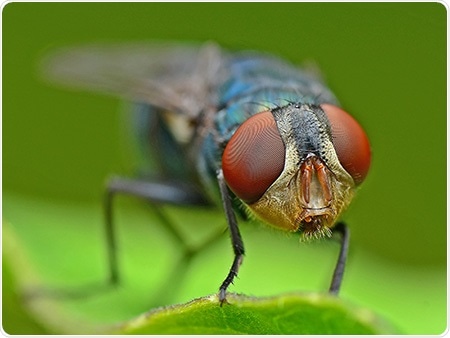The rare hereditary developmental disorder, called Meier-Gorlin syndrome, or MGS for short, causes dwarfism, missing patella, a small brain, small ears, and other skeletal abnormalities. This condition leads to stillbirths and miscarriages in severe cases.

Meier-Gorlin syndrome is a rare genetic developmental disorder that causes dwarfism, small ears, a small brain, missing patella, and other skeletal abnormalities. Image Credit: The University of Alabama at Birmingham.
Igor Chesnokov, Ph.D., and his collaborators from The University of Alabama at Birmingham (UAB) used to an unusual method to investigate this recessive, autosomal disorder—they placed mutant human genes into fruit flies. And in particular, they looked at one of the genes, known as Orc6, implicated in MGS.
In a study recently published in the Genetics journal, and featured as a highlighted article, the researchers used this animal model to find out the role of a single human Orc6 mutation—a Lysine 23 to Glutamic acid (K23E) substitution—that was initially reported back in 2017.
In patients suffering from MGS, the mutation of K23E induces an analogous detectable developmental disorder as an Orc6 mutation that was previously studied by the Chesnokov team, that is, Tyrosine 225 to Serine (Y225S) substitution.
Both these mutations are quite intriguing to contrast, because position 23 is close to the front, or the N-terminal domain, of the extended chain of linked amino acids that folds to create the Orc6 protein. Position 225 is close to the end—or the C-terminal domain—of the Orc6 protein strand.
Orc6 belongs to the Origin Recognition Complex (ORC). This protein complex is crucial to trigger the replication of DNA in a cell, be it human, fruit fly, yeast, or any other eukaryotic organism. If there is no DNA division, an organism cannot grow and a cell cannot divide. The poor division is also associated with stunt growth, as observed in MGS.
In an earlier study focused on the Y225S mutation, and published in the American Journal of Medical Genetics, the UAB team observed that the C-terminal domain of Orc6 is crucial for the interactions been proteins to help create the ORC complex.
Now in the present study, Chesnokov and his collaborators have observed that the K23E mutation in the N-terminal domain of the Orc6 protein disrupts the latter’s ability to attach to DNA. This particular binding is an important step in the ORC function.
Therefore, while the two mutations have varied fundamental molecular mechanisms, they both lead to the formation of deficient pre-replicative complex and decreased replication of DNA, and they also create an analogous phenotype in MGS patients.
One major aspect of this study was the creation of chimeric Orc6 genes. These genes are part of the fruit fly gene and part human gene. It was necessary to create the chimeric Orc6 genes because introducing a human Orc6 gene into fruit flies does not prevent the lethal effect of the deletion of the Orc6 gene in fruit flies; to put this in simple terms, the intact human Orc6 is unable to substitute the function of the fruit fly Orc6, because of the variation in Orc6 interactions with the core ORC found in both organisms.
But when the UAB team developed a hybrid Orc6 that was fruit fly in the C-terminal domain and human in the N-terminal domain, the hybrid Orc6 was able to fully save the fruit flies and developed into adults that could not be distinguished from fruit flies exhibiting wild-type Orc6 gene. This hybrid Orc6 could then be utilized to investigate the mutation of K23E in fruit flies and examine its molecular mechanism.
This hybrid approach, allows the study of human protein functions in an animal system, and it revealed the importance of evolutionary conserved and variable domains of the Orc6 protein. We believe that this hybrid approach not only opens a broad avenue to study new Orc6 mutations for medical and general science purposes, but also might be useful in other humanized models.”
Igor Chesnokov, PhD, Professor, Department of Biochemistry and Molecular Genetics, The University of Alabama at Birmingham
In conclusion, Chesnokov added that the unique benefit of this humanized fly model is that it can differentially test-fly, chimeric, and human Orc6 proteins to demonstrate divergent and conserved traits of the protein traits as well as its role in the metazoan organism cells.
Source:
Journal reference:
Balasov, M., et al. (2020) Humanized Drosophila Model of the Meier-Gorlin Syndrome Reveals Conserved and Divergent Features of the Orc6 Protein. Genetics. doi.org/10.1534/genetics.120.303698.